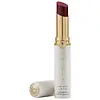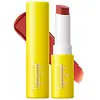What's inside
What's inside
 Key Ingredients
Key Ingredients

 Benefits
Benefits

 Concerns
Concerns

 Ingredients Side-by-side
Ingredients Side-by-side

Ethylhexyl Salicylate 4.7%
UV AbsorberZinc Oxide 15%
Cosmetic ColorantTriethylhexanoin
MaskingDiisostearyl Malate
EmollientSynthetic Wax
AbrasivePolybutene
Glyceryl Diisostearate
EmollientCandelilla Cera
EmollientEthylhexylglycerin
Skin ConditioningPhenoxyethanol
PreservativeGlyceryl Diisostearate/Hydrogenated Rosinate
Skin ConditioningHydrolyzed Silk
HumectantTocopherol
AntioxidantSilica
AbrasiveCI 73360
Cosmetic ColorantCI 19140
Cosmetic ColorantCI 77499
Cosmetic ColorantCI 77891
Cosmetic ColorantEthylhexyl Salicylate 4.7%, Zinc Oxide 15%, Triethylhexanoin, Diisostearyl Malate, Synthetic Wax, Polybutene, Glyceryl Diisostearate, Candelilla Cera, Ethylhexylglycerin, Phenoxyethanol, Glyceryl Diisostearate/Hydrogenated Rosinate, Hydrolyzed Silk, Tocopherol, Silica, CI 73360, CI 19140, CI 77499, CI 77891
Zinc Oxide 17.5%
Cosmetic ColorantRicinus Communis Seed Oil
MaskingCaprylic/Capric Triglyceride
MaskingJojoba Esters
EmollientEuphorbia Cerifera Wax
Persea Gratissima Oil
Skin ConditioningBis-Diglyceryl Polyacyladipate-2
EmollientAroma
Simmondsia Chinensis Seed Oil
EmollientArgania Spinosa Kernel Oil
EmollientTocopheryl Acetate
AntioxidantCopernicia Cerifera Wax
Stevioside
MaskingCetearyl Ethylhexanoate
EmollientSynthetic Fluorphlogopite
Isostearic Acid
CleansingLecithin
EmollientPolyhydroxystearic Acid
EmulsifyingPolyglyceryl-3 Polyricinoleate
EmulsifyingButyrospermum Parkii Butter
Skin ConditioningMangifera Indica Seed Butter
Skin ConditioningAstrocaryum Murumuru Seed Butter
EmollientCalcium Sodium Borosilicate
Rosa Canina Fruit Oil
EmollientSorbitan Isostearate
EmulsifyingBisabolol
MaskingVaccinium Macrocarpon Seed Oil
Skin ConditioningPortulaca Pilosa Extract
Skin ConditioningTocopherol
AntioxidantAscorbyl Palmitate
AntioxidantSucrose Cocoate
EmulsifyingGlycine Soja Oil
EmollientPalmitoyl Tripeptide-38
Skin ConditioningTin Oxide
AbrasiveTitanium Dioxide
Cosmetic ColorantCI 45410
Cosmetic ColorantIron Oxides
CI 19140
Cosmetic ColorantCI 15850
Cosmetic ColorantCI 15985
Cosmetic ColorantCI 42090
Cosmetic ColorantZinc Oxide 17.5%, Ricinus Communis Seed Oil, Caprylic/Capric Triglyceride, Jojoba Esters, Euphorbia Cerifera Wax, Persea Gratissima Oil, Bis-Diglyceryl Polyacyladipate-2, Aroma, Simmondsia Chinensis Seed Oil, Argania Spinosa Kernel Oil, Tocopheryl Acetate, Copernicia Cerifera Wax, Stevioside, Cetearyl Ethylhexanoate, Synthetic Fluorphlogopite, Isostearic Acid, Lecithin, Polyhydroxystearic Acid, Polyglyceryl-3 Polyricinoleate, Butyrospermum Parkii Butter, Mangifera Indica Seed Butter, Astrocaryum Murumuru Seed Butter, Calcium Sodium Borosilicate, Rosa Canina Fruit Oil, Sorbitan Isostearate, Bisabolol, Vaccinium Macrocarpon Seed Oil, Portulaca Pilosa Extract, Tocopherol, Ascorbyl Palmitate, Sucrose Cocoate, Glycine Soja Oil, Palmitoyl Tripeptide-38, Tin Oxide, Titanium Dioxide, CI 45410, Iron Oxides, CI 19140, CI 15850, CI 15985, CI 42090
Alternatives
Ingredients Explained
These ingredients are found in both products.
Ingredients higher up in an ingredient list are typically present in a larger amount.
CI 19140 is also known as Tartrazine. Tartrazine is a synthetic dye used in cosmetics, foods, and medicine to add a yellow color.
Tartrazine is created from petroleum and is water-soluble.
Some people may experience allergies from this dye, especially asthmatics and those with an aspirin intolerance.
Learn more about CI 19140Tocopherol (also known as Vitamin E) is a common antioxidant used to help protect the skin from free-radicals and strengthen the skin barrier. It's also fat soluble - this means our skin is great at absorbing it.
Vitamin E also helps keep your natural skin lipids healthy. Your lipid skin barrier naturally consists of lipids, ceramides, and fatty acids. Vitamin E offers extra protection for your skin’s lipid barrier, keeping your skin healthy and nourished.
Another benefit is a bit of UV protection. Vitamin E helps reduce the damage caused by UVB rays. (It should not replace your sunscreen). Combining it with Vitamin C can decrease sunburned cells and hyperpigmentation after UV exposure.
You might have noticed Vitamin E + C often paired together. This is because it is great at stabilizing Vitamin C. Using the two together helps increase the effectiveness of both ingredients.
There are often claims that Vitamin E can reduce/prevent scarring, but these claims haven't been confirmed by scientific research.
Learn more about TocopherolZinc Oxide is a mineral broad-spectrum UV filter; it is the broadest UVA and UVB reflector approved by the FDA. It also has skin protectant and skin soothing properties.
Zinc oxide is one of the most effective broad-spectrum UV filters. It protects against UVB, UVAII, and UVAI. In comparison to its counterpart titanium dioxide, zinc oxide provides uniform and extended UVA protection.
Another great benefit? This ingredient is highly photostable so it won't degrade easily under sunlight.
A common myth is that mineral UV filters are widely believed to primarily reflect UV light.
However, modern research shows titanium dioxide absorbs UV radiation like chemical filters (~95% absorption & 5% reflection).
Zinc oxide has great skin soothing properties so you'll likely find this in sunscreens formulated for sensitive skin or babies/children. It is unlikely to cause "eye sting" like other sunscreen ingredients.
Regulatory agencies consider zinc oxide to be non-toxic and safe. It has also been shown to not penetrate the skin.
Unfortunately, this ingredient does leave a visible white cast. This is why mineral sunscreens are often less cosmetically elegant than chemical or hybrid ones.
In cosmetics, zinc oxide can be found in both non-nano and nano-sized forms. The nano version is used to reduce white cast and improve the texture of sunscreen formulas.
There are ongoing concerns surrounding nano-zinc oxide's impact on marine ecosystems and whether it can be absorbed into skin.
Regarding marine ecosystems and coral reefs, there is no conclusive evidence that any form of zinc oxide (or any other sunscreen ingredients) will cause harm. The science is still developing but many consumers are keeping a close eye on this issue.
Please note, many destinations have reef-safety sunscreen rules. For instance, the U.S. Virgin Islands advises all visitors to use non-nano mineral sunscreens.
There has also been some stir about whether micronized or nano zinc oxide has potential photoxicity and absorption through the skin/lungs.
An in-vitro (done in a test tube or petri dish) study demonstrated micronized zinc oxide to have potential phototoxicity. There's no need to fret; the EU Commission's Scientific Committee on Consumer Safety has stated, "The relevance of these findings needs to be clarified by appropriate investigations in vivo." Or in other words, further studies done on living organisms are needed to prove this.
Current research shows zinc oxide nanoparticles do not penetrate intact or sunburned skin. They either remain on the surface or in the outermost layer of dead skin (stratum corneum).
Zinc oxide is one of only two classified mineral UV filters with titanium dioxide being the other one.
Fun fact: Zinc has been used throughout history as an ingredient in paint and medicine. An Indian text from 500BC is believed to list zinc oxide as a salve for open wound. The Ancient Greek physician Dioscorides has also mentioned the use of zinc as an ointment in 1AD.
Learn more about Zinc Oxide